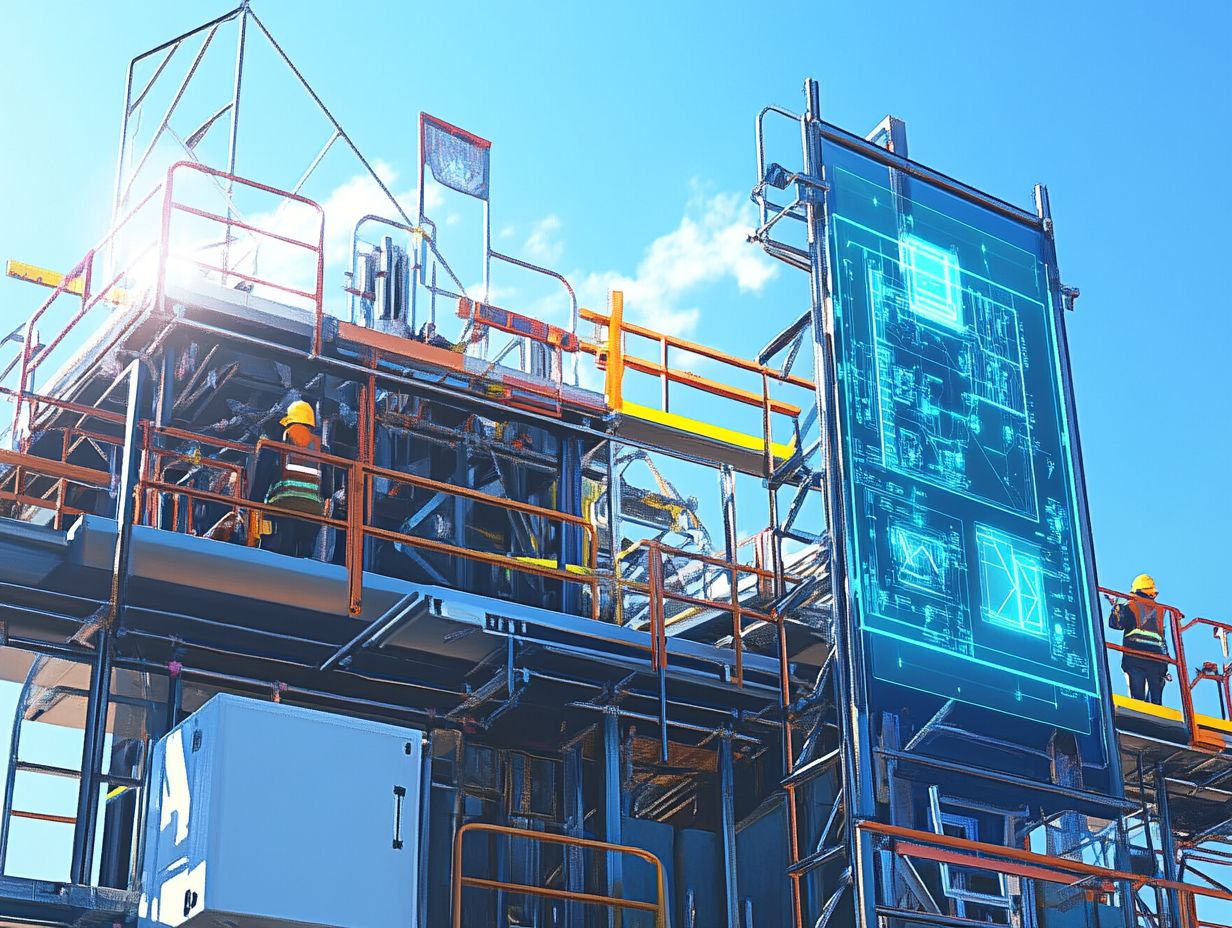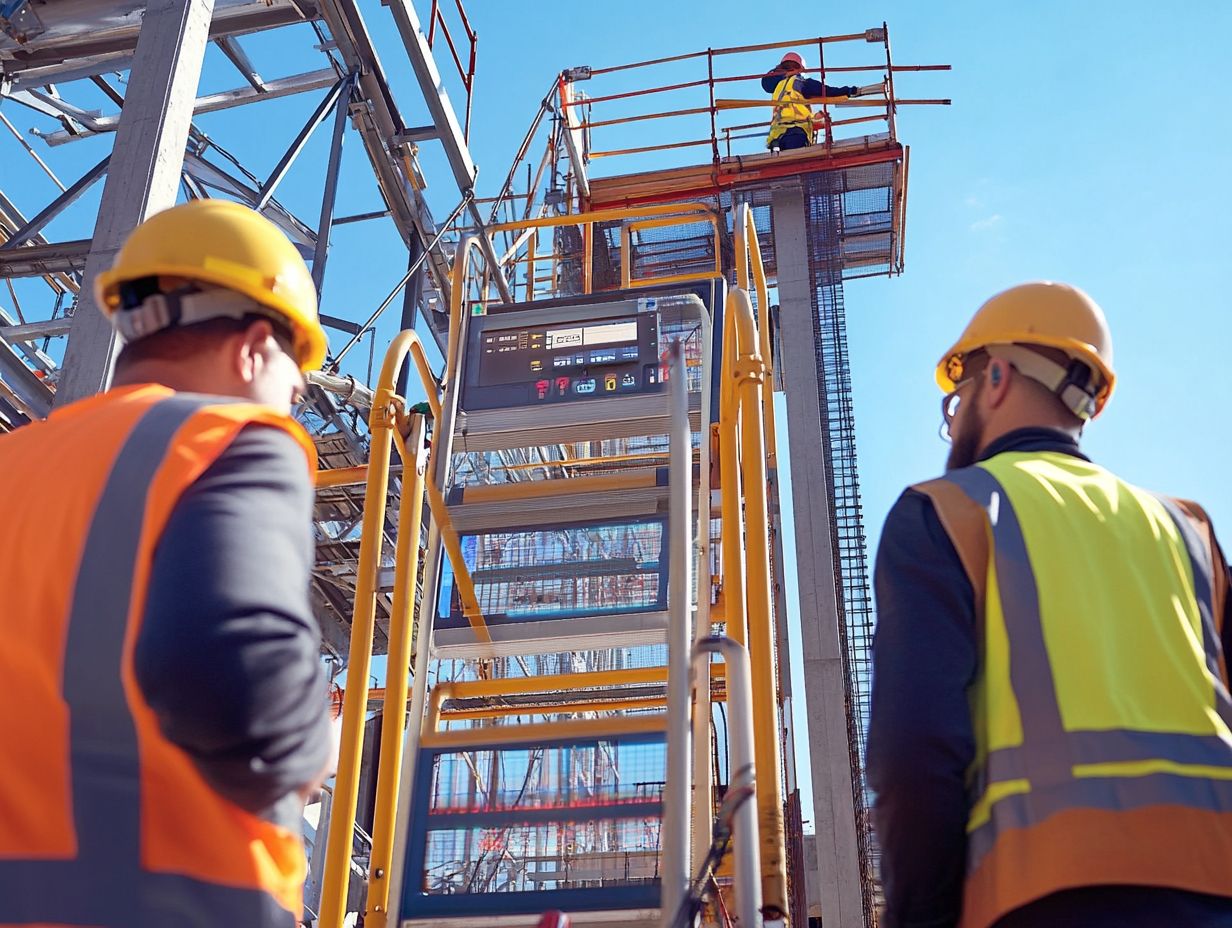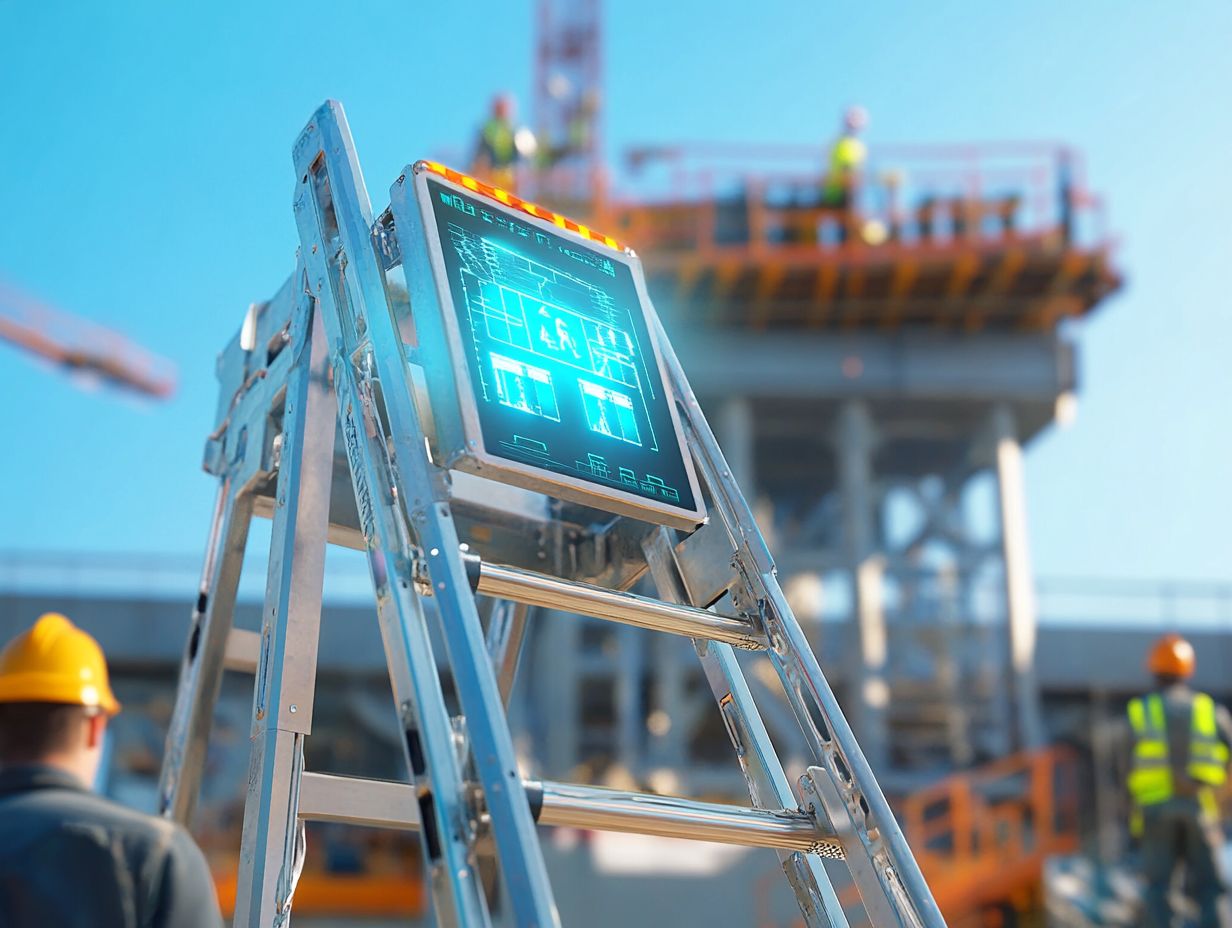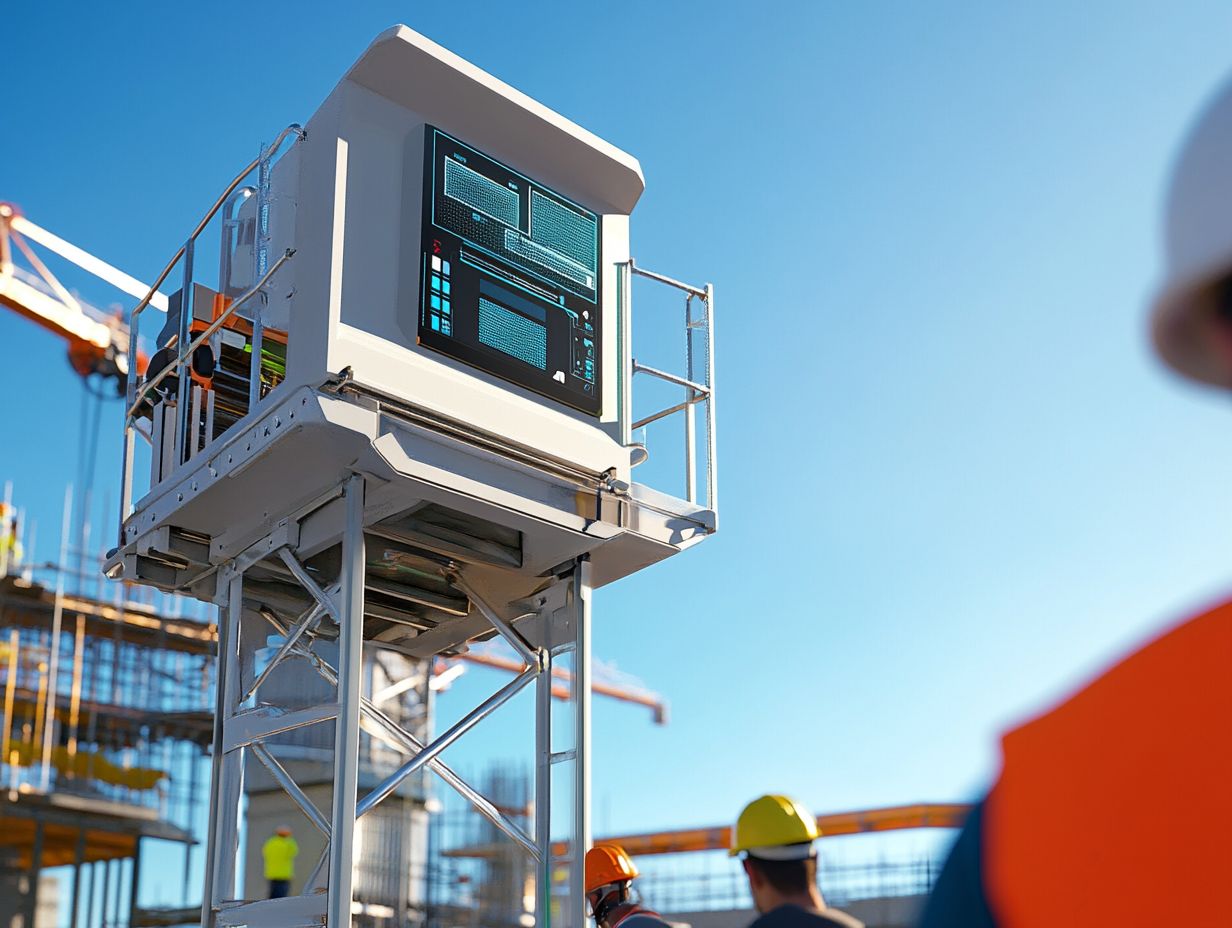Ladders have significantly evolved from their traditional origins, transforming into sophisticated high-tech tools that are revolutionizing the climbing industry.
This article examines the remarkable journey of ladders, emphasizing how technological advancements are enhancing safety, efficiency, and versatility.
While high-tech ladders provide substantial benefits, they also present challenges, including cost and maintenance considerations.
A comprehensive examination of the innovative developments shaping the future of climbing reveals how these modern innovations are fundamentally altering the landscape of the industry.
What are High-Tech Ladders?

High-tech ladders signify a substantial advancement in the climbing industry, incorporating state-of-the-art ladder technology with user-centric features aimed at improving climbing safety and efficiency. These innovative climbing devices employ lightweight materials, ergonomic designs, and advanced technology to accommodate a wide range of applications, from residential environments to industrial settings.
Emphasizing durability and stability, high-tech ladders are meticulously engineered to address the varied requirements of both professional climbers and DIY enthusiasts, illustrating the future of climbing solutions and the continuous evolution of ladder design.
The Evolution of Ladders in the Climbing Industry
The evolution of ladders within the climbing industry has been characterized by substantial technological advancements and innovations that have redefined traditional designs into sophisticated access solutions.
As the climbing industry continues to expand, the increasing demand for safer, more efficient, and versatile climbing equipment has prompted manufacturers to utilize advanced materials and automation. This has resulted in the development of smart ladders.
These trends are indicative of a broader movement towards improved climbing performance and user safety, emphasizing ergonomic design and convenience in climbing activities.
From Traditional to High-Tech

The transition from traditional ladders to high-tech ladders has significantly transformed the climbing equipment sector, leading to enhanced climbing performance and an improved user experience. Traditional ladders frequently lacked critical safety features and ergonomic designs, which are now fundamental aspects of contemporary ladder technology.
Modern high-tech ladders incorporate advanced materials and innovative features, such as telescoping designs and enhanced grip, effectively addressing climbing challenges while catering to the diverse needs of various industries.
This transition not only enhances durability and reduces weight but also instills greater confidence in users when working at heights. Feedback from professionals in construction and maintenance underscores that the comfort associated with these modern ladders contributes to overall performance improvements.
Users value features such as anti-slip steps, integrated safety harness points, and rapid setup mechanisms, which promote greater efficiency and assurance.
As these advancements continue to develop, it is clear that the evolution from traditional to high-tech ladders is establishing new standards for safety and usability, making climbing tasks less daunting and more accessible for all.
Benefits of High-Tech Ladders
High-tech ladders provide a range of benefits that significantly improve climbing efficiency, safety, and user convenience, establishing them as essential tools in both residential and industrial settings.
Equipped with innovative safety features, such as stability enhancements and load capacity assessments, these ladders effectively mitigate the risk of accidents and injuries during operation.
Additionally, their ergonomic designs and portability enable users to access difficult-to-reach areas with ease, thereby transforming the approach to climbing tasks across various sectors.
Increased Safety and Efficiency

Increased safety and efficiency represent the primary advantages of high-tech ladders, which are engineered with advanced safety features that prioritize user protection while enhancing climbing performance. These ladders frequently incorporate smart technology, such as remote monitoring and IoT integration, ensuring that users remain informed about their climbing environment. Rigorous testing and strict adherence to safety regulations further contribute to their reliability, making them a preferred choice for both professional and residential applications.
Many high-tech ladders are equipped with enhanced grip surfaces that significantly reduce the likelihood of slippage, ensuring that climbers maintain a secure foothold under various conditions. Stability is further improved through innovative designs, including wide bases and adjustable legs that accommodate uneven terrain, thereby maximizing safety during use.
Automated adjustments, driven by sensors, provide real-time feedback, allowing users to make necessary modifications promptly, thus optimizing their climbing experience. Collectively, these features not only promote greater climbing efficiency but also instill confidence in users, knowing they are supported by state-of-the-art safety technology.
Versatility and Adaptability
The versatility and adaptability of high-tech ladders render them suitable for a broad spectrum of applications, ranging from construction and maintenance to outdoor climbing projects. Many contemporary ladders are engineered as multi-functional tools, enabling users to modify their configurations to suit specific tasks. This adaptability is achieved through the employment of lightweight materials and innovative design trends, which enhance portability and usability across various environments.
These advancements not only improve safety during operation but also address the distinct requirements of different sectors, including emergency services, industrial maintenance, and personal home improvement projects. For example, professionals in the electrical and plumbing industries utilize specialized high-tech ladders that are optimized for stability and reach, while outdoor enthusiasts benefit from options designed for durability in rugged terrains.
Furthermore, the integration of smart technology in select models introduces an additional layer of functionality, allowing users to monitor their tasks in real-time, thereby improving efficiency and user confidence.
Challenges and Limitations of High-Tech Ladders

While high-tech ladders offer numerous advantages, they also entail certain challenges and limitations that users should carefully consider when selecting climbing equipment.
The initial investment required for advanced ladder technology can be substantial, which may restrict access for some consumers. Furthermore, ongoing maintenance and the necessity for repairs can present difficulties, particularly for individuals who are not well-versed in the specific requirements associated with these innovative access solutions.
Cost and Maintenance
The cost and maintenance of advanced ladders are critical factors for potential buyers, as these sophisticated access solutions often carry a higher price compared to traditional ladders. Investing in high-quality ladder manufacturing ensures durability and optimal performance; however, it is essential for users to recognize the significance of regular maintenance to uphold safety features and climbing performance metrics. Neglecting the maintenance of advanced ladders can result in diminished efficiency and increased safety risks.
This investment necessitates not only an initial expenditure but also a commitment to ongoing maintenance. Regular inspections are crucial, including assessments for any worn components and verification that all locking mechanisms operate effectively.
Users may face challenges such as structural fatigue or electronic malfunctions, particularly in models that incorporate smart technology. It is recommended to establish a maintenance schedule that includes cleaning, lubricating moving parts, and replacing components as they wear.
By adhering to these practices, users can enhance the longevity of their ladders while reducing the likelihood of accidents on the job site.
Future Innovations in High-Tech Ladders
The future of high-tech ladders is set to witness significant innovations that aim to enhance climbing technology, improve safety standards, and transform the overall climbing experience. Continuous research and development efforts are expected to yield advancements in automation technology and the integration of the Internet of Things (IoT), facilitating more intelligent user interfaces and improved monitoring capabilities.
As the industry progresses, it is anticipated that high-tech ladders will integrate increasingly advanced materials and design trends that prioritize user safety and convenience.
Predictions and Possibilities
Predictions regarding the future of high-tech ladders indicate a promising trajectory for innovations in climbing technology, with advancements in technology integration poised to redefine the market. As manufacturers respond to evolving demographics and emerging trends in climbing, it is reasonable to anticipate the development of increasingly user-friendly features and smart technologies that enhance the overall climbing experience.
Additionally, the potential incorporation of sustainable materials and modular designs could fundamentally transform the usage of ladders across various applications.
In the forthcoming years, one may expect features such as built-in sensors capable of assessing stability and providing real-time feedback to users, thereby significantly improving safety. The integration of Internet of Things (IoT) solutions could facilitate the collection of data by ladders, offering valuable insights on maintenance and performance that would benefit both consumers and industry professionals.
As high-tech ladders gain popularity among independent contractors and DIY enthusiasts, it is anticipated that competition within the marketplace will drive innovative designs, resulting in more accessible and tailored climbing solutions. The convergence of cutting-edge technology with traditional climbing tools is poised to establish an entirely new category of ladder possibilities.
How High-Tech Ladders are Changing the Game
High-tech ladders are revolutionizing the climbing industry by introducing innovative solutions that significantly enhance user experience, safety, and efficiency across various applications. These advancements not only address the limitations of traditional ladders but also establish new standards in the industry, promoting a transition towards more sophisticated equipment that emphasizes user convenience and performance.
As technology continues to advance, high-tech ladders are poised to play a critical role in shaping the future of climbing.
Recent innovations, such as smart sensors and lightweight materials, allow users to navigate challenging environments with exceptional ease. Integrated features, including automatic stabilization and adjustable heights, accommodate a range of needs, rendering these modern ladders highly versatile.
Trend-setting designs, often inspired by professional-grade equipment, are now accessible to the general public, thereby fostering a culture of safety and reliability. As consumers increasingly prioritize ergonomic design, the adoption of high-tech ladders signifies a broader transformation within the climbing community, expanding possibilities for both recreational and professional climbers.


